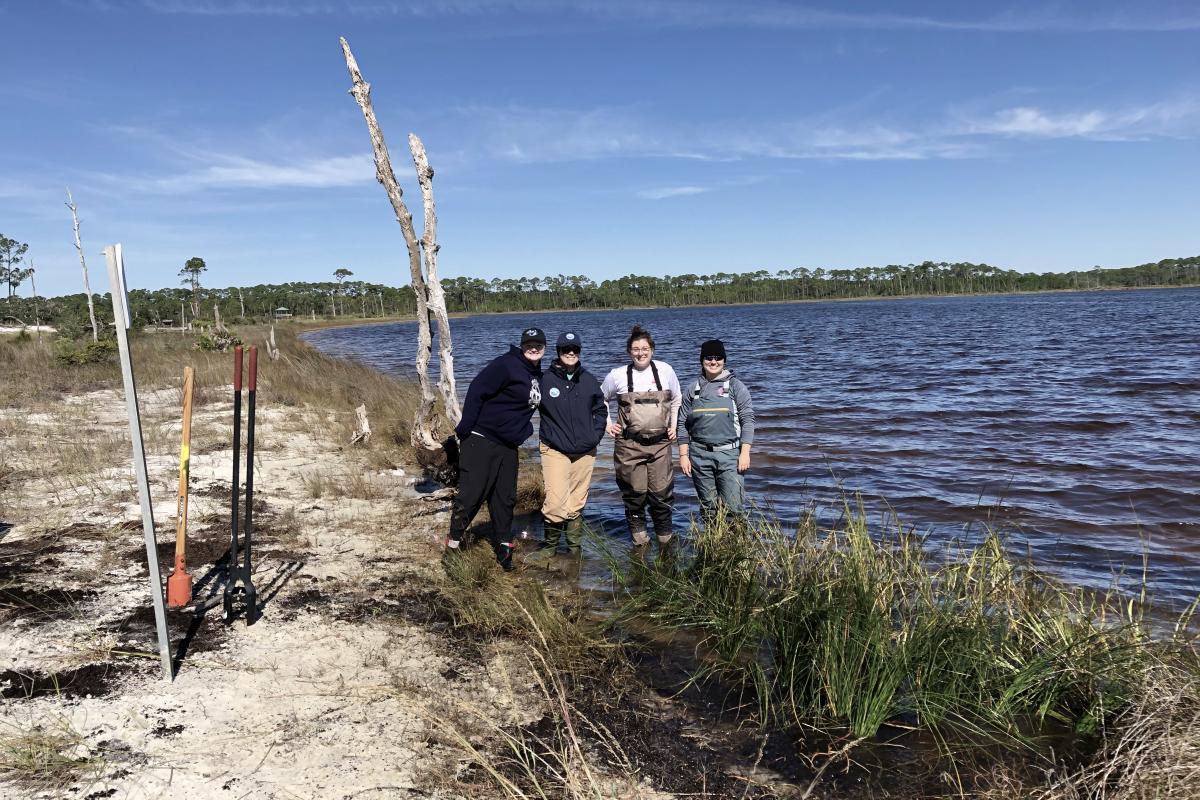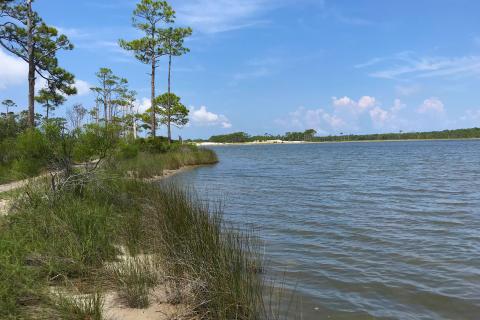In early November, a team of Trustee staff working on behalf of the Alabama Trustee Implementation Group and their project partners met along the shore of Little Lagoon with the goal of restoring part of its eroding shoreline. The Little Lagoon Living Shoreline Project was approved by the trustees in their second restoration plan and the team was more than ready to begin installing native wetland plants.
Little Lagoon is located within the Bon Secour National Wildlife Refuge, which has been managed by the U.S. Fish and Wildlife Service since the refuge was established in 1980. The 2010 Deepwater Horizon oil spill caused oiling of the refuge’s beaches, and cleanup activities damaged both beaches and dunes. This is one of a handful of projects approved for the refuge to offset the injury to natural resources and reduction in recreational use caused by the spill.
The team planted 250 black needle rush (Juncus romarianus) and 250 smooth cordgrass (Spartina alterniflora) plants along a heavily eroded part of the southwest shore of the lagoon. The plants will be used to gauge wave action and site conditions and help the experts design a suitable planting pattern to protect this shoreline from additional erosion.

Wildlife Service, The Nature Conservancy,
Mississippi State University, and University
of South Alabama.
Vegetated living shorelines are important first lines of defense that help reduce erosion and maintain or improve the water quality of a water body. At Little Lagoon, the dune vegetation behind the beach is another line of defense against erosion from severe weather. Dune vegetation also provides important habitat for many kinds of wildlife, and in this case, the dunes at Bon Secour provide habitat for the endangered Alabama beach mouse.
The team will return in December to install another 500 plants. They will then collect survival data from the test plots and use them to determine the type of wave reduction barrier that is best suited to protect the plants based on the site conditions. The team plans to return in March 2020 to install 10,000 black needle rush and the barrier.
The planting team included representatives from the Fish and Wildlife Service, including the Refuge; The Nature Conservancy; Mississippi State University; and University of South Alabama.
Learn about three other living shoreline projects helping restore the Gulf Coast after Deepwater Horizon.


